Sentiment analysis tools are a game-changer for businesses looking to gain a competitive edge in 2024. By analyzing customer opinions, monitoring brand reputation, and identifying areas for improvement, these tools provide invaluable insights that can drive strategic decision-making.
In this comprehensive guide, we'll review 15 top sentiment analysis tools, comparing their features, pricing, pros, and cons. Whether you're a small business owner or a marketing executive at a large corporation, you'll find the perfect tool to suit your needs and budget.
From social media monitoring to emotion detection and aspect-based analysis, we'll cover all the essential aspects of sentiment analysis software. By the end of this article, you'll have a clear understanding of how these tools work and how to choose the right one for your business.
So, let's dive in and explore the world of sentiment analysis tools!
Top 15 Sentiment Analysis Tools Reviewed: Features, Pricing, Pros & Cons
In our extensive analysis, we evaluated 15 of the most popular sentiment analysis tools on the market. We looked at key features, pricing models, and the pros and cons of each tool to help you make an informed decision.

Tool 1: Kapiche
Kapiche is an advanced text analysis tool with sentiment analysis capabilities that leverages natural language processing (NLP) and machine learning to transform unstructured data and customer feedback into actionable insights. Designed for mid to large businesses, Kapiche excels at uncovering sentiment trends and themes from various data sources such as surveys, reviews, and support tickets. This tool is particularly beneficial for voice of the customer, consumer insights and customer experience teams looking to improve customer satisfaction and loyalty.
Key Features:
Advanced Text Analytics: Analyze and interpret customer feedback using cutting-edge NLP and machine learning techniques.
Sentiment and Thematic Analysis: Identify sentiment and uncover themes and trends in customer feedback with high accuracy.
Customizable Dashboards: Create interactive dashboards tailored to your specific needs for easy data visualization and exploration.
Pricing: Starting at $2,650/ month, or custom enterprise plans.
Pros:
User-friendly interface
Excellent customer support
Wide range of integrations
Cons:
Higher pricing compared to some competitors
Limited customization options in lower-tier plans
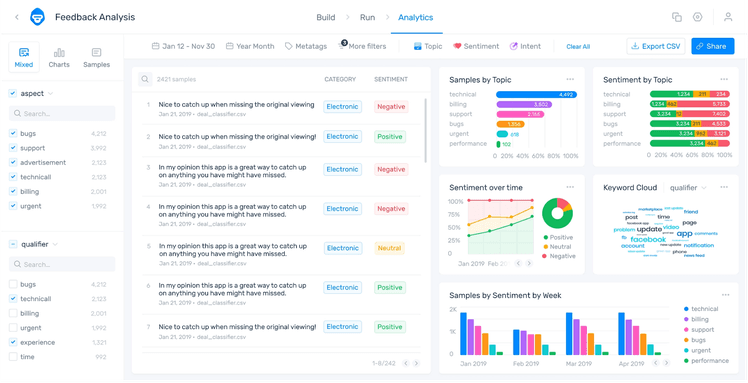
Tool 2: MonkeyLearn
MonkeyLearn is a versatile sentiment analysis tool that offers a range of text analysis capabilities, including sentiment detection, keyword extraction, and topic classification. It is well-suited for businesses that need to analyze customer feedback from multiple sources such as social media, emails, and surveys. MonkeyLearn's user-friendly interface and powerful API make it a favorite among marketers and data analysts in small organizations.
Key Features:
Sentiment Analysis: Detect positive, negative, and neutral sentiment in customer feedback.
Custom Text Classifiers: Build custom models to categorize and analyze text data specific to your business needs.
Easy Integration: Integrate with popular platforms like Google Sheets, Zapier, and more for seamless data analysis.
Pricing: Free plan available, or paid plans start at $299 per month.
Pros:
User-friendly interface
Excellent customer support
Wide range of integrations
Cons:
Higher pricing compared to some competitors
Limited customization options in lower-tier plans
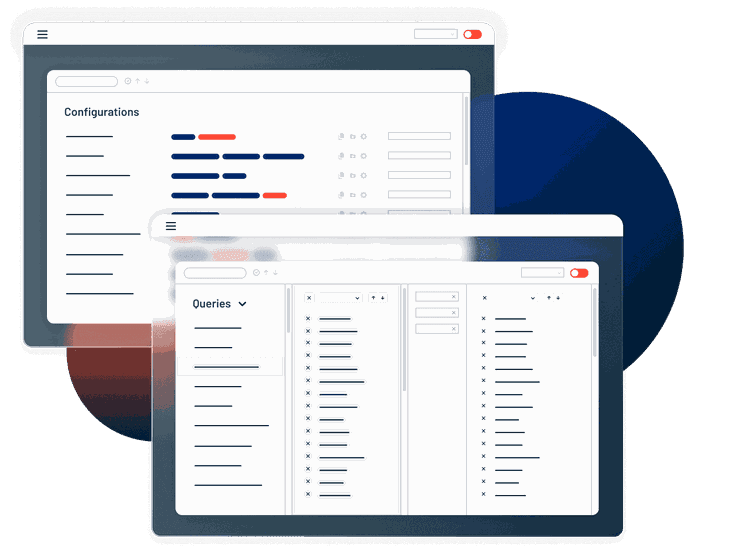
Tool 3: Lexalytics
Lexalytics offers a robust sentiment analysis solution that excels at processing large volumes of text data. It provides comprehensive sentiment analysis, entity recognition, and theme extraction capabilities. Lexalytics is ideal for businesses in industries such as finance, healthcare, and retail, where understanding customer sentiment and trends is crucial for strategic decision-making.
Key Features:
Real-time Sentiment Analysis: Analyze sentiment in real-time across various text sources.
Entity and Theme Extraction: Identify key entities and themes within your text data for deeper insights.
Customizable Models: Customize sentiment models to better fit your specific industry and use cases.
Pricing: Custom pricing based on data volume and features required
Pros:
Supports a wide range of languages
Powerful customization options
Comprehensive analytics and reporting
Cons:
Steeper learning curve compared to some tools
Pricing may be higher for smaller businesses

Tool 4: MeaningCloud
MeaningCloud is a powerful sentiment analysis tool that offers deep text analytics capabilities. It provides free sentiment analysis tools, language detection, and topic extraction, making it ideal for businesses that need to analyze multilingual customer feedback. MeaningCloud is particularly useful for market research and social media monitoring, helping businesses gain valuable insights into customer opinions and trends.
Key Features:
Multilingual Sentiment Analysis: Analyze sentiment in multiple languages to understand global customer feedback.
Topic Extraction: Identify and extract relevant topics from text data for deeper analysis.
Comprehensive APIs: Integrate with various platforms using MeaningCloud's robust APIs for seamless text analysis.
Pricing: Free plan available, paid plans range from $9-999 per month.
Pros:
Advanced sentiment analysis capabilities
Supports multiple languages
Integrates with various platforms
Cons:
Steeper learning curve due to advanced features
Limited customer support in lower-tier plans

Tool 5: Brandwatch
Brandwatch is a leading social media monitoring tool that offers advanced sentiment analysis capabilities. It helps businesses track and analyze customer sentiment across social media platforms, blogs, and forums. Brandwatch is ideal for marketing teams and brand managers who need to monitor brand reputation, track sentiment, and engage with customers in real-time.
Key Features:
Social Media Sentiment Analysis: Track and analyze sentiment across major social media platforms.
Real-time Monitoring: Monitor brand mentions and sentiment in real-time to quickly address any issues.
Advanced Analytics: Gain insights into customer behavior and trends with advanced analytics and reporting features.
Pricing: Custom pricing based on data volume and features required
Pros:
Real-time social media monitoring
Advanced influencer identification
Comprehensive analytics and reporting
Cons:
Higher pricing compared to some competitors
Steeper learning curve due to advanced features
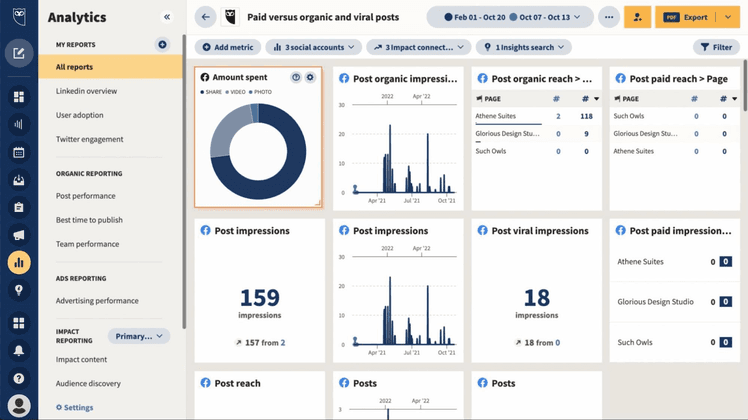
Tool 6: Hootsuite Insights
Hootsuite Insights, powered by Brandwatch, is a comprehensive social media analytics tool that includes a sentiment analysis feature. It allows businesses to monitor brand sentiment, track social media trends, and engage with customers. Hootsuite Insights is perfect for social media managers and marketing professionals looking to enhance their social media strategy and improve customer engagement.
Key Features:
Sentiment Analysis: Analyze sentiment across social media channels to understand customer opinions.
Trend Tracking: Identify and track emerging trends in social media conversations.
Comprehensive Reporting: Generate detailed reports to measure the impact of your social media efforts.
Pricing: Included with Hootsuite's Business and Enterprise plans.
Pros:
Integrated with Hootsuite's social media management platform
Comprehensive analytics and reporting
User-friendly interface
Cons:
Limited customization options
Requires Hootsuite subscription
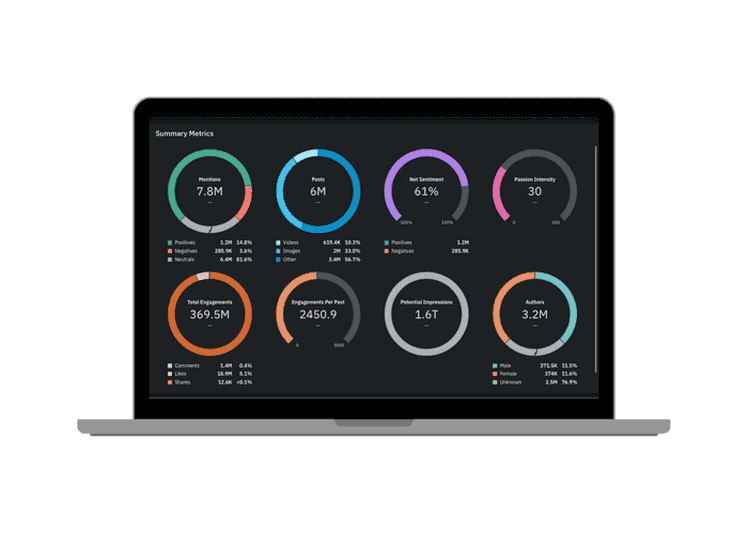
Tool 7: Quid
Quid is a powerful data analytics tool that provides advanced sentiment analysis and visualization capabilities. It helps businesses understand complex data sets by uncovering patterns and relationships in text data. Quid is particularly useful for market researchers and strategists who need to analyze large volumes of data from various sources, including news articles, research papers, and social media.
Key Features:
Advanced Sentiment Analysis: Perform in-depth sentiment analysis on large text datasets.
Data Visualization: Visualize complex data relationships with interactive and intuitive graphs.
Customizable Insights: Tailor insights and reports to meet specific business needs and objectives.
Pricing: Custom pricing based on data volume and features required
Pros:
Advanced sentiment analysis capabilities
Supports multiple languages
Integrates with various platforms
Cons:
Steeper learning curve due to advanced features
Limited customer support in lower-tier plans
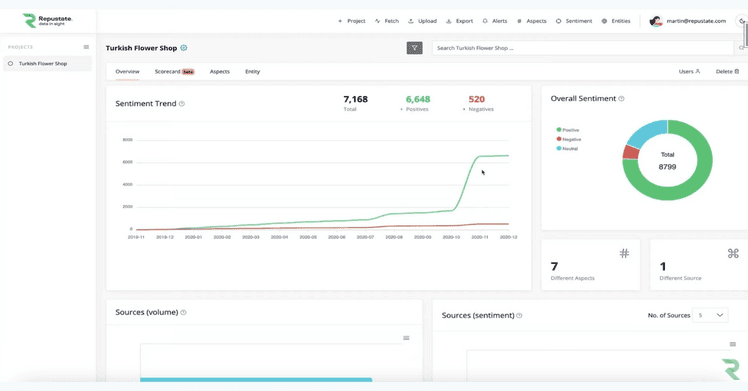
Tool 8: Repustate
Repustate offers a comprehensive sentiment analysis solution that focuses on multilingual text analytics. It provides sentiment analysis, entity recognition, and content categorization capabilities. Repustate is ideal for businesses with a global presence, allowing them to analyze customer feedback in multiple languages and gain valuable insights into customer sentiment.
Key Features:
Multilingual Sentiment Analysis: Analyze sentiment in over 20 languages to understand global customer feedback.
Entity Recognition: Identify key entities within text data for deeper analysis.
Content Categorization: Categorize and classify content based on custom taxonomies and business needs.
Pricing: Offers a free plan, with paid plans starting at $199/month
Pros:
Advanced sentiment analysis capabilities
Supports multiple languages
Integrates with various platforms
Cons:
Steeper learning curve due to advanced features
Limited customer support in lower-tier plans
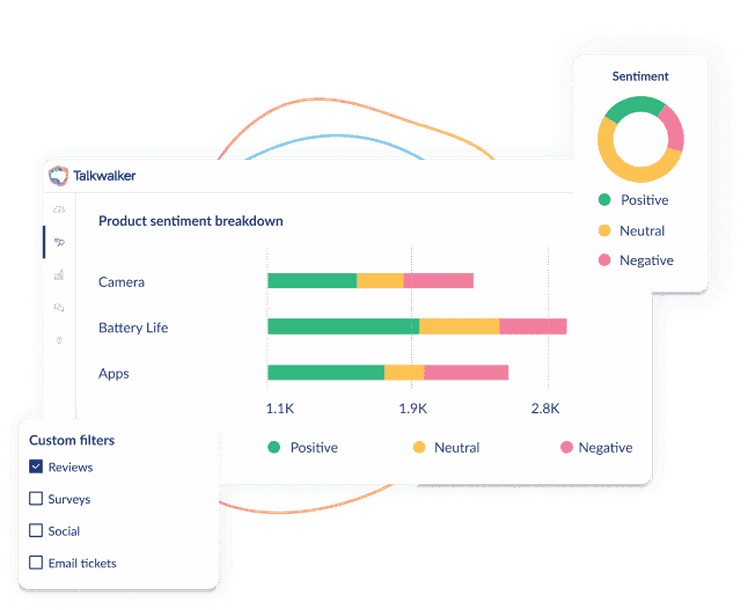
Tool 9: Talkwalker
Talkwalker is a powerful social media analytics and sentiment analysis tool that helps businesses monitor brand sentiment, track social media trends, and gain insights into customer opinions. It is ideal for marketing teams and brand managers who need to keep a close eye on their brand's online reputation and engage with customers in real-time.
Key Features:
Social Media Sentiment Analysis: Analyze sentiment across social media channels to understand customer opinions.
Trend Tracking: Identify and track emerging trends in social media conversations.
Comprehensive Reporting: Generate detailed reports to measure the impact of your social media efforts.
Pricing: Custom pricing based on data volume and features required. Starts at $9,600 annually ($800/ month).
Pros:
Comprehensive social media monitoring
Advanced sentiment analysis capabilities
Integrates with various platforms
Cons:
Higher pricing compared to some competitors
Steeper learning curve due to advanced features
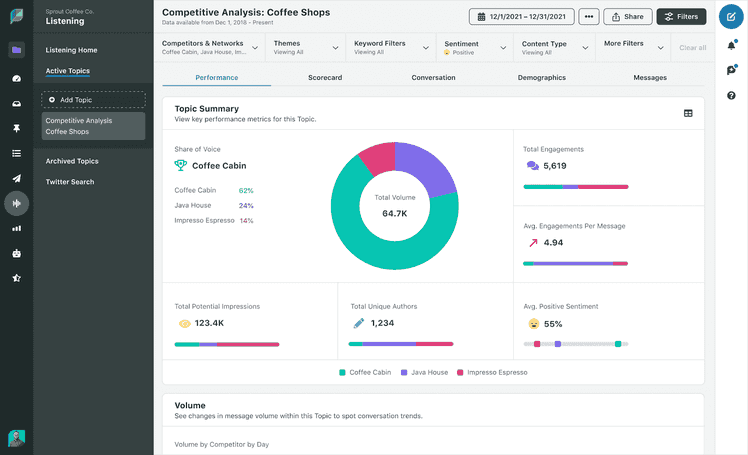
Tool 10: Sprout Social
Sprout Social is a comprehensive social media management tool that includes sentiment analysis capabilities. It allows businesses to mine social media data, monitor brand sentiment, engage with customers, and analyze social media performance. Sprout Social is perfect for social media managers and marketing professionals looking to enhance their social media strategy and improve customer engagement.
Key Features:
Sentiment Analysis: Analyze sentiment across social media channels to understand customer opinions.
Engagement Tools: Engage with customers directly through the platform to improve customer satisfaction.
Performance Analytics: Track and analyze social media performance with detailed analytics and reporting features.
Pricing: Included with Sprout Social's Professional and Advanced plans ($89 per user/ month).
Pros:
Integrated with Sprout Social's social media management platform
Comprehensive analytics and reporting
User-friendly interface
Cons:
Limited customization options
Requires Sprout Social subscription

Tool 11: Qualtrics
Qualtrics is a leading experience management platform that offers robust sentiment analysis capabilities. It helps businesses analyze customer feedback from surveys, reviews, and other sources to uncover sentiment trends and insights. Qualtrics is ideal for customer experience managers and market researchers looking to improve customer satisfaction and loyalty.
Key Features:
Sentiment Analysis: Analyze sentiment in customer feedback to understand overall customer satisfaction.
Survey Management: Create and distribute surveys to gather customer feedback and insights.
Advanced Reporting: Generate detailed reports to analyze customer feedback and identify areas for improvement.
Pricing: Custom pricing based on data volume and features required (starts at $1,500 per user/ year).
Pros:
Advanced sentiment analysis capabilities
Supports multiple languages
Integrates with various platforms
Cons:
Steeper learning curve due to advanced features
Limited customer support in lower-tier plans
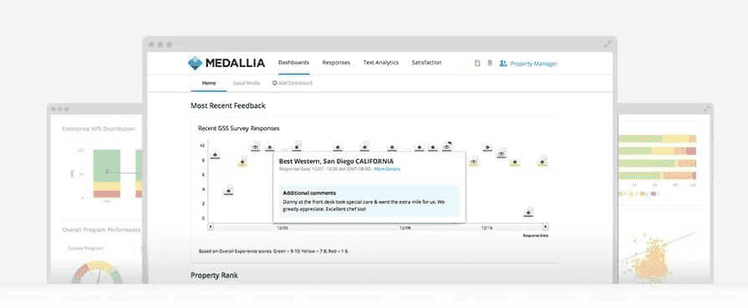
Tool 12: Medallia
Medallia is a leading customer experience management platform that offers advanced sentiment analysis capabilities. It helps businesses analyze customer feedback from multiple sources, including surveys, social media, and reviews, to uncover sentiment trends and insights. Medallia is ideal for customer experience managers and marketing professionals looking to improve customer satisfaction and loyalty.
Key Features:
Sentiment Analysis: Analyze sentiment in customer feedback to understand overall customer satisfaction.
Multi-Channel Feedback: Gather and analyze feedback from multiple sources to gain a comprehensive view of customer sentiment.
Advanced Reporting: Generate detailed reports to analyze customer feedback and identify areas for improvement.
Pricing: Custom pricing based on data volume and features required.
Pros:
Advanced sentiment analysis capabilities
Supports multiple languages
Integrates with various platforms
Cons:
Steeper learning curve due to advanced features
Limited customer support in lower-tier plans
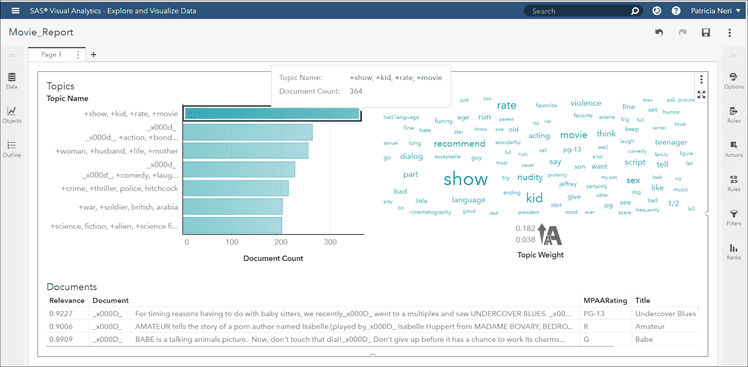
Tool 13: SAS Sentiment Analysis
SAS Sentiment Analysis is a powerful text analytics tool that provides comprehensive sentiment analysis capabilities. It helps businesses analyze customer feedback from multiple sources to uncover sentiment trends and insights. SAS Sentiment Analysis is ideal for data analysts and market researchers looking to improve customer satisfaction and loyalty.
Key Features:
Sentiment Analysis: Analyze sentiment in customer feedback to understand overall customer satisfaction.
Text Mining: Perform advanced text mining to uncover insights and trends in customer feedback.
Customizable Models: Build custom models to better fit your specific business needs and use cases.
Pricing: Custom pricing based on data volume and features required.
Pros:
Advanced sentiment analysis capabilities
Supports multiple languages
Integrates with various platforms
Cons:
Steeper learning curve due to advanced features
Limited customer support in lower-tier plans
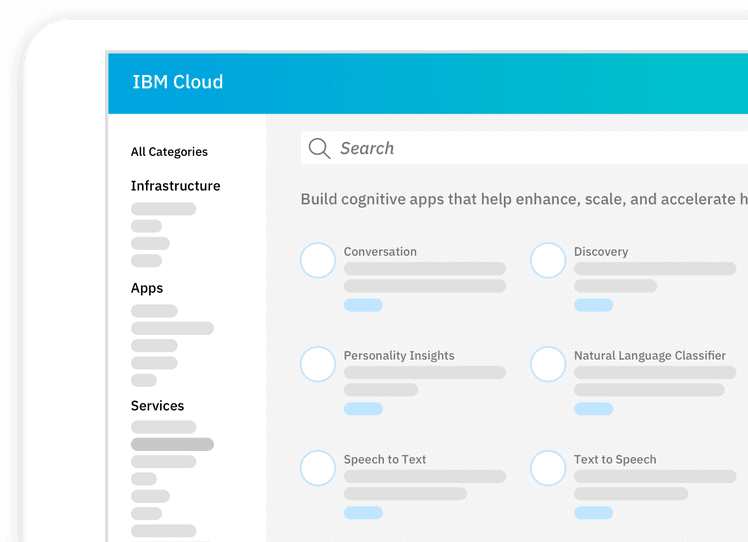
Tool 14: IBM Watson Natural Language Understanding
IBM Watson Natural Language Understanding is a powerful text analytics tool that offers advanced sentiment analysis capabilities. It helps businesses analyze customer feedback from multiple sources to uncover sentiment trends and insights. IBM Watson is ideal for businesses of all sizes looking to leverage advanced AI and machine learning to improve customer satisfaction and loyalty.
Key Features:
Sentiment Analysis: Analyze sentiment in customer feedback to understand overall customer satisfaction.
Entity and Keyword Extraction: Identify key entities and keywords within text data for deeper analysis.
Advanced AI Capabilities: Leverage advanced AI and machine learning to uncover insights and trends in customer feedback.
Pricing: Free tier available, paid plans start at $0.003 per text record.
Pros:
Advanced sentiment analysis capabilities
Supports multiple languages
Integrates with various platforms
Cons:
Steeper learning curve due to advanced features
Limited customer support in lower-tier plans
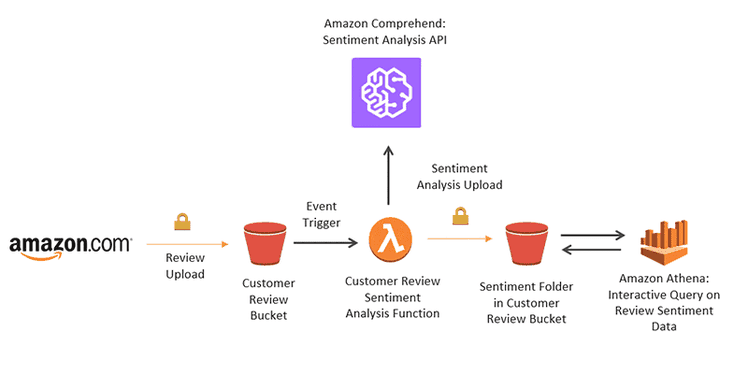
Tool 15: Amazon Comprehend
Amazon Comprehend is a powerful text analytics tool that offers advanced sentiment analysis capabilities. It helps businesses analyze customer feedback from multiple sources to uncover sentiment trends and insights. Amazon Comprehend is ideal for businesses of all sizes looking to leverage advanced AI and machine learning to improve customer satisfaction and loyalty.
Key Features:
Sentiment Analysis: Analyze sentiment in customer feedback to understand overall customer satisfaction.
Entity and Key Phrase Extraction: Identify key entities and phrases within text data for deeper analysis.
Customizable Models: Build custom models to better fit your specific business needs and use cases.
Pricing: Free tier available, paid plans start at $0.0001 per unit.
Pros:
Advanced sentiment analysis capabilities
Supports multiple languages
Integrates with various platforms
Cons:
Steeper learning curve due to advanced features
Limited customer support in lower-tier plans
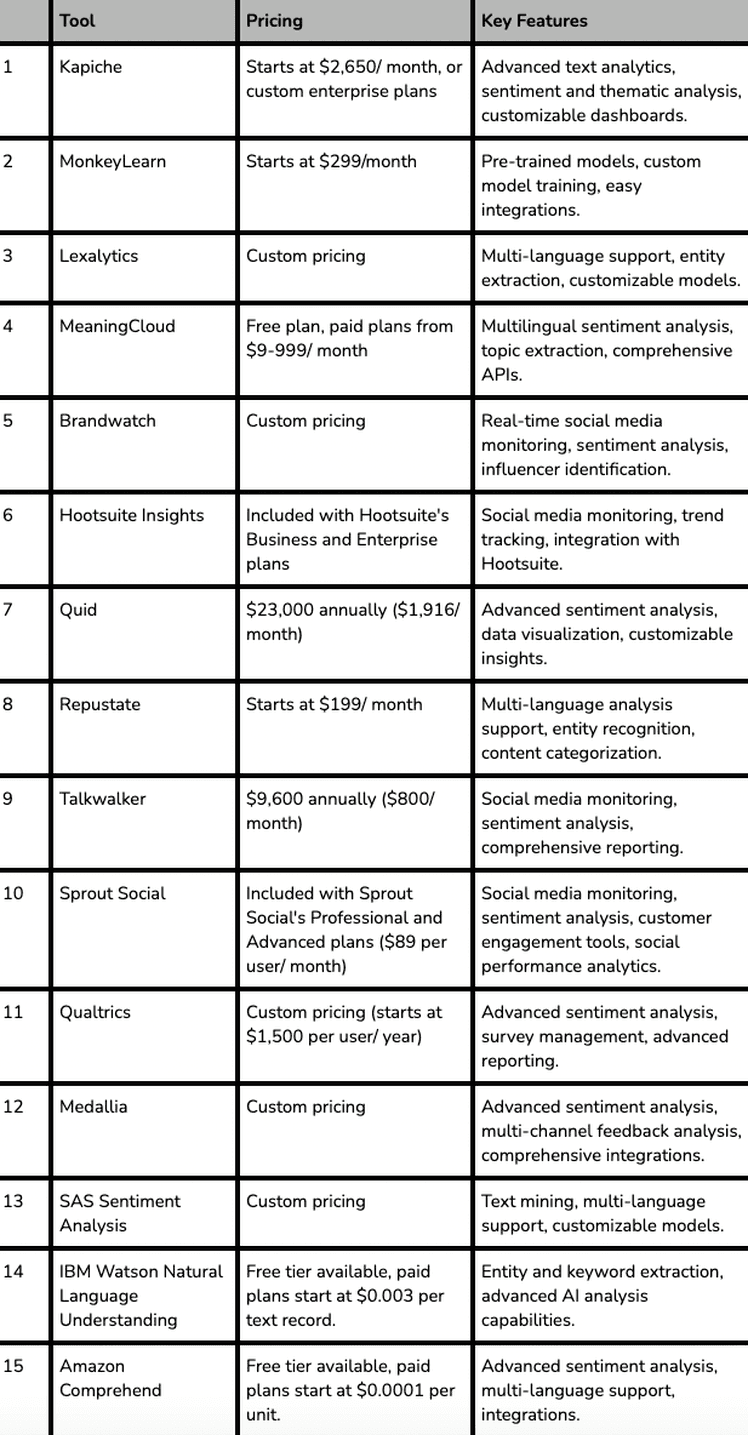
Overall, Kapiche is a great option for many businesses. The combination of pre-trained models and custom training options, along with a user-friendly interface make it a versatile and accessible tool for sentiment analysis tasks.
Sentiment Analysis Software: How It Works & Key Benefits
Now that we have an idea of the top tools available for sentiment analysis, let's dive a bit deeper into what aspects of sentiment analysis these tools should be helping with.
Overall, great sentiment analysis software uses AI to determine the emotional tone of text data. This artificial intelligence helps you gain insights into customer opinions, and identify areas for improvement.
Let's explore the mechanics behind the top sentiment analysis tools.
The Mechanics of Sentiment Analysis Software
Sentiment analysis software relies on a combination of Natural Language Processing (NLP), machine learning algorithms, and lexicon-based approaches to determine the emotional tone of text data.
NLP is a branch of AI that enables computers to understand, interpret, and manipulate human language. It involves techniques such as tokenization, part-of-speech tagging, and parsing to break down text into its component parts and analyze its structure.
Machine learning algorithms are then applied to the preprocessed text data to identify patterns and classify the sentiment as positive, negative, or neutral. These algorithms are trained on large datasets of labeled text, allowing them to learn and improve their accuracy over time.
Lexicon-based approaches
Lexicon-based approaches involve using predefined lists of words and phrases that are associated with specific sentiments. These lexicons can be manually created or automatically generated using machine learning techniques.
When analyzing text data, the software compares the words and phrases in the text to those in the lexicon to determine the overall sentiment. This approach is often used in combination with machine learning algorithms to improve accuracy.
Key Benefits of Using Sentiment Analysis Software
There are many benefits to building a strong sentiment analysis function in your team, with the help of the tools above. Here are some of the top ways that ai sentiment analysis tools can benefit your business.
1. Gain insights into customer opinions
One of the primary benefits of sentiment analysis software is its ability to quickly analyze large volumes of customer feedback from various sources, such as social media, reviews, and surveys. This allows businesses to gain a comprehensive understanding of how customers perceive their products, services, and brand.
By identifying trends and patterns in customer sentiment, businesses can make data-driven decisions to improve their offerings and enhance the customer experience. For example, if sentiment analysis reveals that customers are consistently dissatisfied with a particular product feature, the company can prioritize improvements in that area.
2. Identify areas for improvement
Sentiment analysis software can help businesses identify specific areas that need improvement by pinpointing the root causes of negative sentiment. This could include issues with product quality, customer service, or even pricing.
By addressing these pain points, businesses can proactively prevent customer churn and improve overall satisfaction. Additionally, the sentiment score analysis can be used to track the effectiveness of improvement efforts over time, ensuring that the changes made are having the desired impact on customer sentiment.
3. Monitor brand reputation
These days, a company's reputation can be made or broken by online conversations. Sentiment analysis software allows businesses to monitor their brand reputation in real-time by analyzing mentions across various platforms.
This enables companies to quickly identify and address potential PR crises before they escalate, as well as capitalize on positive sentiment to enhance their brand image. By staying on top of public perception, businesses can maintain a strong reputation and build trust with their target audience.
A company like Coca-Cola for example, uses many sentiment analysis tools to monitor its brand reputation and respond promptly to customer concerns.
4. Competitive analysis
Sentiment analysis software can also be used to gain insights into competitors' performance and customer perception. By analyzing sentiment around rival brands, businesses can identify their strengths and weaknesses, as well as uncover opportunities to differentiate themselves in the market.
This competitive intelligence can inform strategic decision-making, such as product development, marketing campaigns, and pricing strategies. By staying attuned to the sentiment landscape within their industry, businesses can maintain a competitive edge and adapt to changing customer preferences.
5. Predictive analytics
Advanced sentiment analysis tools can even be used for predictive analytics, helping businesses anticipate future trends and customer behaviour. By analyzing historical sentiment data and identifying correlations with other metrics, such as sales or website traffic, companies can make informed predictions about future performance.
This predictive capability allows businesses to proactively optimize their strategies and allocate resources more effectively. For example, if sentiment analysis suggests that a particular product is likely to gain popularity in the coming months, the company can adjust its production and marketing efforts accordingly to capitalize on the opportunity.
It's important to note that sentiment analysis software is not without its challenges, such as dealing with sarcasm, irony, or context-dependent language. However, by acknowledging these limitations and using the software in conjunction with human analysis, businesses can gain a more comprehensive understanding of customer sentiment.

Emotion Detection Tools: Understanding the Emotional Tone of Text
A key part of successful sentiment analysis, is the ability for your tool to perform emotion detection. This means it analyzes text data to determine the underlying emotions and sentiments. The tools above are all capable of helping with this, with varying degrees. Done well, it's useful for measuring customer satisfaction, enhancing support, and personalizing marketing
How Emotion Detection Tools Work
Emotion detection tools use a combination of techniques to identify and classify the emotional tone of text data. These tools start by identifying emotional keywords and phrases within the text. For example, words like "happy," "excited," or "love" may indicate positive emotions, while "frustrated," "disappointed," or "angry" suggest negative sentiments.
However, emotion detection goes beyond just keyword spotting. These tools also analyze the context and sentence structure to determine the overall emotional tone. They consider factors such as punctuation, capitalization, and the placement of emotional words within a sentence. By examining the surrounding context, emotion detection tools can distinguish between statements like "I'm not happy" and "I'm happy, not sad".
Assigning Emotion Labels
Once the emotional keywords and context are analyzed, emotion detection tools assign labels to categorize the emotions present in the text. Common emotion labels include joy, anger, sadness, fear, surprise, and disgust. Some tools may use more granular labels or even allow customization based on specific business needs.
Use Cases for Emotion Detection Tools
Emotion detection tools have various applications across industries. Here are some key use cases:
Measuring Customer Satisfaction: By analyzing customer feedback, reviews, and survey responses, emotion detection tools can gauge customer satisfaction levels. This helps businesses identify areas of improvement and track changes in customer sentiment over time.
Enhancing Customer Support: Emotion detection can be applied to customer support interactions, such as live chat logs or support tickets. By identifying the emotional state of customers, support teams can prioritize urgent cases, provide empathetic responses, and escalate issues to the appropriate channels.
Personalizing Marketing Messages: Understanding the emotional preferences of target audiences allows marketers to craft more effective and resonant messages. Emotion detection tools can analyze social media posts, blog comments, and other user-generated content to identify the emotions that resonate best with specific customer segments.
Improving Product Development
Emotion detection tools can also aid in product development. By analyzing user feedback and reviews, product teams can identify the features and aspects that evoke positive emotions and address the pain points that lead to negative feedback and sentiments. This emotional intelligence helps in creating products that meet user expectations and deliver a better user experience.
Can ChatGPT Do Sentiment Analysis?
ChatGPT, the large language model developed by OpenAI, has the capability to perform sentiment analysis tasks. While ChatGPT is primarily known for its conversational abilities, it can also be used to analyze the sentiment of text data.
However, it's important to note that ChatGPT is a general-purpose language model and may not be specifically optimized for sentiment analysis. Dedicated sentiment analysis tools are often trained on large datasets specifically labeled for both aspect based sentiment analysis and emotion detection, making them more accurate and fine-tuned for this task.
That being said, ChatGPT can still provide valuable insights into the overall sentiment of text data. It can identify positive, negative, or neutral sentiments and even detect specific emotions to a certain extent. Developers and businesses can leverage ChatGPT's natural language processing capabilities to build custom sentiment analysis solutions or integrate it into existing tools.
While ChatGPT is a powerful tool, it's essential to consider the specific requirements and accuracy needs of your sentiment analysis tasks. For more advanced and precise emotion detection, specialized sentiment analysis tools may be a better fit.

Social Media Sentiment Analysis: Monitoring Brand Perception Online
Doing social media sentiment analysis, allows you to gain valuable insights into how your brand is perceived across social media platforms. Here are some elements of social media sentiment analysis you can consider in choosing a tool.
Popular Social Media Platforms for Sentiment Analysis
Social media sentiment analysis focuses on analyzing the opinions, attitudes, and emotions expressed by users on various social media platforms. The most popular platforms where you'll want to set up sentiment analysis include:
X (Twitter)
With its real-time nature and public accessibility, X (Twitter) is an excellent source for sentiment analysis. By monitoring tweets containing relevant keywords, hashtags, or mentions of your brand, you can quickly gauge public opinion and identify emerging trends.
Meta (Facebook)
Meta (Facebook) is the largest social media platform in 2024, with over3 billion monthly active users. It offers a wealth of user-generated content, including posts, comments, and reactions. Analyzing sentiment on Facebook can provide insights into how users perceive your brand, products, or services. Additionally, Facebook's demographic data can help you understand sentiment among specific target audiences.
Instagram has over2 billion monthly active users. Instagram is a valuable source for sentiment analysis, particularly for brands targeting younger audiences. By analyzing the captions, comments, and hashtags associated with your brand's posts, you can gain insights into user sentiment and engagement levels.
Choosing the Right Sentiment Analysis Tool for Your Business
TL;DR:
Consider accuracy, ease of use, and scalability when selecting a sentiment analysis tool
Test the tool with a sample dataset and compare results with manual analysis
Monitor the tool's performance over time to ensure it meets your business needs
Considerations for Selecting a Sentiment Analysis Tool
Selecting the right sentiment analysis tool is crucial for businesses looking to gain valuable insights from customer feedback and online conversations. When evaluating the best sentiment analysis tools around, there are several key factors to consider:
Accuracy and reliability
The accuracy of a sentiment analysis tool directly impacts the quality of insights you can derive from the data. Look for tools that have been extensively tested and validated on large, diverse datasets. As Bing Liu, a leading expert in sentiment analysis, states, "Accuracy is the most important aspect of a sentiment analysis system. Without high accuracy, the system is not usable in practice."
Ease of use and integration
A sentiment analysis tool should be easy to use and integrate with your existing workflow and systems. Look for tools that offer intuitive user interfaces, well-documented APIs, and support for popular data formats and platforms.
Scalability and cost
As your business grows, your sentiment analysis needs may change. Choose a tool that can scale with your business and handle increasing volumes of data without compromising performance or accuracy. Also, consider the cost of the tool and ensure that it aligns with your budget and expected return on investment.
Evaluating Sentiment Analysis Tool Performance
Once you have narrowed down your options based on the above considerations, it's essential to evaluate the performance of the sentiment analysis tools in a real-world setting. Here's how you can assess the effectiveness of a sentiment analysis tool:
Testing with a sample dataset
Start by testing the sentiment analysis tool with a sample dataset that is representative of your business domain and customer feedback. This will give you a good indication of how well the tool performs in terms of accuracy and ease of use.
Comparing results with manual analysis
To assess the accuracy of the sentiment analysis tool, compare its results with a manual sentiment analysis model of the same dataset. This will help you identify any discrepancies or areas where the tool may need improvement.
Monitoring performance over time
Continuously monitor the performance of the sentiment analysis tool over time to ensure that it consistently delivers accurate results and meets your business needs. Regularly review the tool's performance metrics and gather feedback from users to identify areas for improvement.
By considering these factors and evaluating the performance of sentiment analysis tools in a real-world setting, businesses can make an informed decision and choose the right tool for their specific needs.
In Summary
By now, you have a comprehensive view of the top sentiment analysis tools available, and how to evaluate them against your needs. Remember to test their performance with sample datasets, and monitor effectiveness over time to ensure you're getting the most value from your investment.
What specific challenges do you face in understanding customer sentiment and opinions? Identifying your unique requirements will help you choose a sentiment analysis tool that aligns with your goals and delivers actionable insights to drive your business forward.
To see how Kapiche's sentiment analysis tool in action, head into ouron-demand demo and explore how it can help your customer experience goals!







